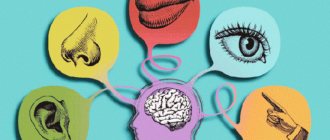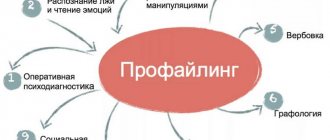Often in psychology this concept is used as the opposite of desensitization. While desensitization is a process of extinction, sensitization is a process of acquisition where someone learns to respond more strongly to a stimulus or stimulus. This word is usually used in the context of fighting addictions.
In this article:
The difference between sensitization and desensitizationHow to rekindle love in a marriage with sensitizationHidden sensitizationWorking with addictionsExample from the film: why trust in the method has been underminedDisgust as a way to combat addictionBehavioral therapy
The difference between sensitization and desensitization
Photo by Alycia Fung: Pexels
While exposure therapy is used to address fears and anxieties, sensitization is used to establish normal or desired behavior through classical conditioning (Operant conditioning can also be used to encourage behavior through positive reinforcement or incentives).
An early sensitization-based behavioral therapy was bedwetting therapy developed by O. Hobart Mowrer in the 1930s. He tried to combat bedwetting, or enuresis, by providing children with moisture-sensitive pads.
When the child urinated, a loud buzzer sounded. After several repetitions, the sensation of a full bladder (an internal stimulus) triggered a preemptive awakening so that the child could wake up and get to the bathroom.
This device was a commercial success and helped many children recover. The success rate was about 50% when parents worked as therapists, but that was enough to keep it selling for many years.
What is desensitization and how is it used?
Another common use of sensitivity therapy is in marriage counseling to rekindle love and romance. Sexual arousal is a biological response, instinctive and reflex-oriented, so it is a good candidate for classical conditioning.
It is known that sex hormones respond to classical conditions. To restore mutual interest, couples are encouraged to consciously place important stimuli before enjoyable romantic experiences.
Kinds
If we analyze the concept of sensitization from the point of view of anatomy, biology, medicine, we can distinguish two types of aggravation of feelings:
- Active. It appears after the introduction of an allergen into the body. An irritant can enter the body naturally, but to do this it must bypass protective barriers - skin, mucous membranes. 1–3 weeks after penetration of the pathogenic agent, increased sensitivity of certain analyzers appears.
- Passive. To develop it, one animal was injected with blood serum from another sensitized animal. A change in general condition was observed within 24 hours and persisted for up to 40 days.
From a psychological point of view, sensitization can persist:
- For a long time, have a permanent character. Caused by serious changes in the body. The maximum acuity of feelings is observed from 20 to 30 years. After this age, gradual weakening begins.
- Short period of time. Depends on the mental state and physiological characteristics.
How to rekindle love in marriage through sensitization
The therapist may begin by having the couple abstain from passion for a period of time while working to improve communication. The next step is to encourage physical contact, but of a non-sexual nature. Massage is often used as a way to express tenderness.
The couple can then be encouraged to start "dating" again. This includes planning a romantic evening together in advance. Families are strongly encouraged to set the mood in whatever way they prefer: music, dim lighting, eating together, whatever works. This generates cues or signals that will be associated with a hormonal response.
If one thing leads to another and the result is good, then a positive type of classical conditioning is established. Romantic cues (a delicious dinner, a massage, favorite music) begin to have a biological warming effect. The body quickly learns, on both unconscious and conscious levels, which signals predict powerful positive emotional experiences. Romance in marriage is reborn.
Diagnostic algorithm at the stage of identifying a medical problem
Algorithm for using molecular packages “Trees-1” and “Trees-2” to predict the effectiveness of ASIT
| Molecular package | Allergy components | Efficiency of ASIT |
| MP "Trees-1" | Main allergenic component Bet v 1 “+” minor allergic components Bet v 2 and Bet v 4 “-” | ASIT is effective |
| Main allergenic component Bet v 1 “ — ” Minor allergic components Bet v 2 and Bet v 4 — + | ASIT is not effective | |
| MP "Trees-2" | Main allergenic component Bet v 1 + minor allergenic components Bet v 2, Bet v 4, Bet v 6 — | ASIT is effective |
| Main allergenic component Bet v 1 — minor allergenic components Bet v 2, Bet v 4, Bet v 6 — + | ASIT is not effective |
Working with dependencies
Let's say an alcoholic wants to quit drinking. One approach is to try to create a negative emotional response to thoughts about drinking. Theoretically, this can be done by following thoughts about drinking that cause anxiety or disgust.
For example, in therapy it might look like this (the therapist teaches how to formulate such a story):
A man enters a bar. He decides to drink a glass of beer. Now he goes to the bar. As he approaches the bar, he feels a strange sensation in his stomach. I feel dizzy and feel nauseous.
(The description continues and becomes more vivid and unpleasant).
...The person turns away from the beer and immediately begins to feel better. When he goes out into the clean fresh air, he feels great. He goes home without drinking.
Treatment for overt sensitization using drugs that induce nausea, not just imagination, was tried in the Soviet Union as early as the 1930s. A Soviet psychology textbook from the 1930s depicts a line of men sitting on small stools, each with a metal bucket between their knees, and each drinking from a shot glass.
Photo by Keira Burton from Pexels
They drank alcohol with medicine, which quickly made them vomit. This was supposed to make them stop drinking alcohol.
Synesthesia
The science that deals with the measurement of sensations, comparing quantitative indicators of the intensity of stimuli with the strength of perceived information, is called psychophysics.
From all studies, psychophysiological patterns have been identified:
- thresholds of perception;
- adaptation;
- sensitization;
- contrast of sensations;
- synesthesia.
This science solves the problem of the quantitative relationship between the physical and mental world. The possibilities of human sensations are limited and lie between measured thresholds.
If sensitization is an increase in sensitivity, then sensory adaptation is an adaptation to exposure, a decrease in sensitivity. For example, a sudden change in lighting, and the eyes take some time to get used to either darkness or light. In adaptation, two types are observed: anesthesia (accustomation to the complete absence of sensation) and dullness with intense exposure .
Synesthesia is the occurrence of a sensation in one analyzer when exposed to a stimulus that is characteristic of other analyzers. For example, the appearance of images when reading or listening to music, “color hearing”, “taste of words”, “smell of color” and other options.
Sensitization and synesthesia are more pronounced in those who have a relatively weak nervous system, low endurance and stability. The state of pregnancy and overwork intensify this psychological phenomenon.
An example from the film: why trust in the method was undermined
In the film A Clockwork Orange, sensitization was carried out (not hidden), very similar to Soviet therapy against alcoholism. The main character, a young man, was arrested for murder.
To turn him against violence, the convict was given a nausea-inducing drug. Meanwhile (for some reason) Beethoven's music was playing in his ears. After his release, the young man became violently ill whenever he initiated an act of violence or listened to Beethoven's music.
The caricature of sensitization therapy in A Clockwork Orange alarmed the public and increased public mistrust of conditioning methods. In reality, this technique is unlikely to work. A person forced to watch violent films while sick from drugs will blame the drug for his illness, not the content of the film.
Enhanced sensations
Scientists have proven that increased sensations occur against the background of:
- Age-related changes.
- Disturbances of the endocrine balance of the body. Under severe stress, nervous breakdowns, and pregnancy, the perception of habitual stimuli changes.
- Pathologies of the nervous system. People with mental disorders and disorders of the nervous system are more susceptible to sensitization.
With overwork and lack of sleep, temporary sensitization occurs.
Attention should also be paid to the contrast of sensations - changes in the quality and intensity of sensations under the influence of accompanying, preliminary stimuli.
When a person is exposed to two irritating factors at once, a simultaneous contrast appears.
For example, against a white background, a dark object will appear lighter, and against a dark background, a white object will appear darker.
The consistent contrast can be traced by a simple example - if you touch a weakly heated object with a cold hand, you will feel that it is hot.
Disgust as a way to combat addictions
Taste aversion is a powerful form of conditioning: fast and long-lasting. However, the Clockwork Orange procedure involves visual stimuli that are not easily associated with disease.
Photo by Anete Lusina: Pexels
Some commercial products attempt to harness the power of taste aversion to help break addiction. Unfortunately, theory is not always successfully translated into practice. Addiction is one of the most powerful motivational forces. Countering it with an aversion to the taste is not a magic solution.
In fact, aversion therapy does not work as well as more traditional approaches such as peer group therapy. Aversion techniques have one more disadvantage: they are unpleasant!
Adaptation
With sensitization, sensitivity increases depending on the impact of stimuli on physiology and psyche. As adaptation occurs, sensations increase or decrease. They are influenced by changing environmental factors. When entering a dark room after visiting a room with good lighting, it takes time for your vision to get used to the darkness.
Depending on the severity, there are 2 degrees of adaptation:
- Dulling of feelings. This degree is observed when exposed to strong irritants. For example, in perfume stores, visitors quickly get used to strong odors.
- Anesthesia. It appears when the irritant affects the body for a long time. Gradually the feelings disappear completely. For example, when a person wears the same clothes every day, he gets used to the way it touches the skin.
When a person begins to get used to the influence of external stimuli, he has the opportunity to analyze the current situation in depth. Increased sensitivity to little things.
Behavioral therapy
However, behavioral therapy can help achieve success when sensitization occurs. Desensitization was the first therapy to be called behavioral therapy. It was consciously developed using ideas from conditioning and focused directly on problem behavior rather than attempting to treat the underlying mental illness.
Therefore, this method can be called the most successful. In addition, as part of the work, the therapist teaches the patient relaxation techniques, which also bring excellent results when faced with irritants.
Concept and essence
Sensitization is a psychological concept that explains the increased sensitivity of nerve centers. Similar phenomena occur under the influence of various stimuli.
Organs that perceive information from the outside world:
- tongue - taste sensations;
- skin - exposure to temperature, chemicals;
- eyes - collect information about the size, shape, color of objects;
- nose - sense of smell;
- interoceptive receptors - sensations emanating from internal organs;
- vestibular apparatus - determining the position of the body in space;
- ligaments, tendons, muscles - movement.
With the help of functional analyzers, a person collects primary information. It is then transmitted to individual elements where it is analyzed. After the initial processing, the highest evaluation of the data occurs, which occurs in the cerebral cortex.










